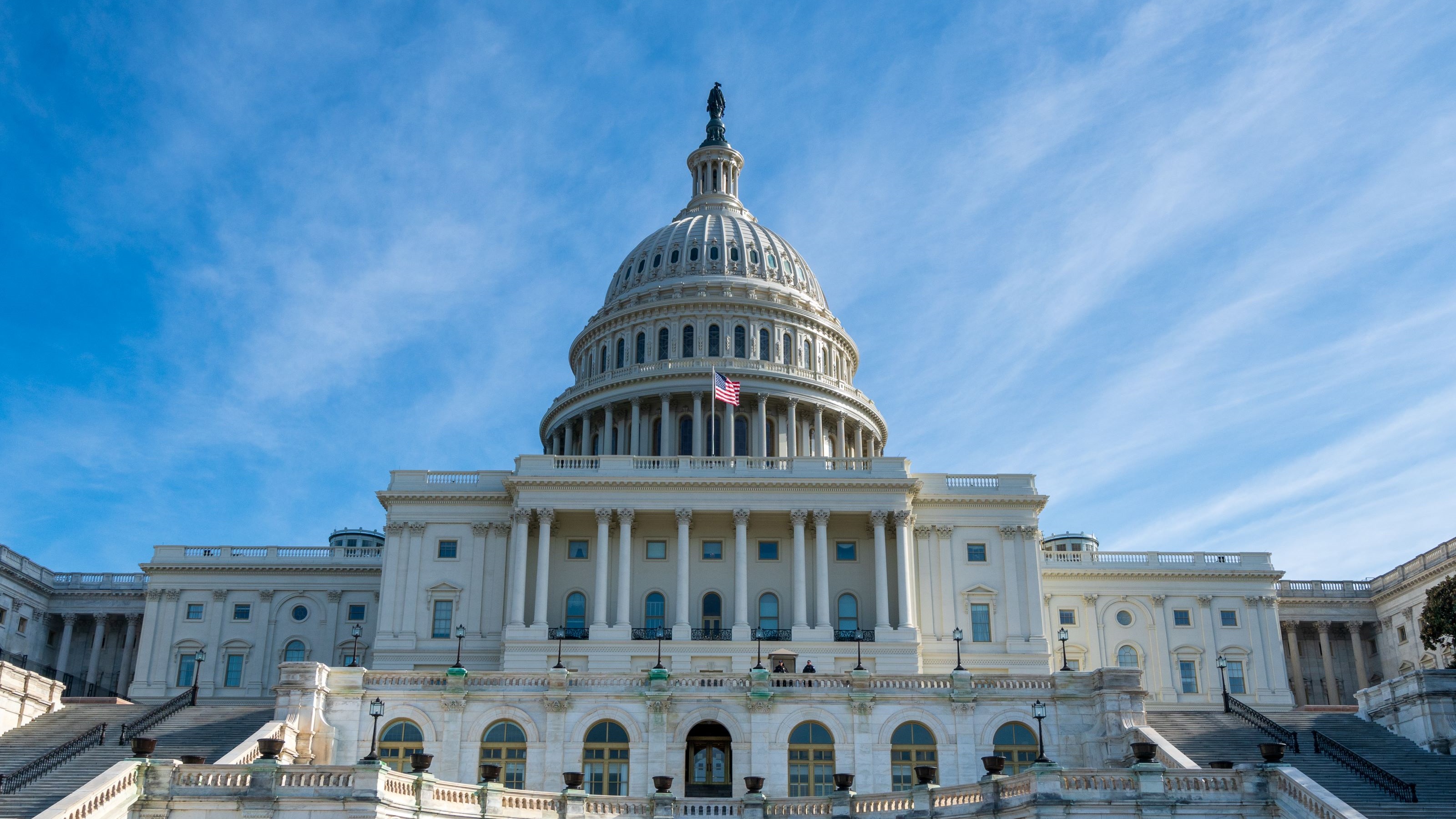What Is a Qualified Charitable Distribution (QCD)?
A QCD can lower your tax bill while meeting your charitable giving goals in retirement. Here’s how.


Understanding how a qualified charitable distribution (QCD) works is important. Not only could the donation lead to several tax benefits, but the money donated may substantially impact the charity of your choice.
However, there are age and income-limit rules regarding QCDs, and potential tax implications if you choose to make one. Consult with your IRA custodian or other professional if you have further questions about your tax position.
Here are the ins and outs of QCDs.
From just $107.88 $24.99 for Kiplinger Personal Finance
Become a smarter, better informed investor. Subscribe from just $107.88 $24.99, plus get up to 4 Special Issues

Sign up for Kiplinger’s Free Newsletters
Profit and prosper with the best of expert advice on investing, taxes, retirement, personal finance and more - straight to your e-mail.
Profit and prosper with the best of expert advice - straight to your e-mail.
Related: New Tax Rules High-Earners Should Know Before Donating in 2025
QCD 2024 limit: What it is and what you need to know
A QCD is a distribution from your individual retirement account (IRA) to a qualified charity of your choice.
To make a QCD in 2024, you must meet the following requirements:
- You must be age 70½ or older
- You can donate up to $105,000 ($210,000 if married spouses)
- Have a traditional IRA, inherited IRA, or inactive SEP/inactive SIMPLE IRA
- The "Q" stands for qualified charity (more on that later)
Tax benefits of QCDs
You can make a QCD for a variety of tax reasons. Namely, a charitable distribution from an IRA can help reduce the taxability of required minimum distributions (RMDs).
RMDs are the minimum amount of money someone 73 or older must withdraw yearly from their retirement savings plan. Taking these required distributions can increase your taxable income.
One primary benefit of a QCD is the potential reduction of tax liability. If you don’t need all the funds from your RMD, donating a portion as a QCD may potentially help:
- Lower the amount of tax that you owe
- Prevent phaseouts of other tax benefits, like itemized deductions
- Reduce high taxes on Social Security benefits
- Lower Medicare premiums
Ways in which QCDs lower taxable income
QCDs are not counted as “taxable income” since they are transferred directly from your IRA to the qualified charity of your choice. Thus, they’re not subject to taxes on your tax return.
QCDs can also lower taxable income in two additional ways:
- You can still take the standard deduction since QCDs are not subject to itemization (if you have no other itemized deductions, this may help lower your tax bill)
- Since your gross income is lower (because QCDs are exempt from taxable income) you may avoid a higher income tax bracket
How do you make a QCD?
QCDs are made by donating the funds directly from your IRA to the qualifying charity (or charities) you choose.
A qualified charity includes those that:
- Have a 501(c)(3) tax designation
- Are eligible to receive tax-deductible contributions
The IRS has a tool for searching tax-exempt organizations. However, it’s important to double-check with the charity beforehand to ensure they’re eligible to receive QCDs. Also, talk with your IRA custodian before you make a QCD, as they may have additional information for you to complete the transaction.
Who can’t make a QCD?
Taxpayers younger than 70½ years old cannot donate a QCD. You also can’t make a QCD from 401(k)s, 403(b), deferred compensation or Thrift Savings Plan (TSP), or other employer plan.
Additionally, the below retirement savings plans cannot make a QCD:
- Active simplified employee pension (SEP) plan
- Active savings incentive match plan for employees (SIMPLE)
However, those with “inactive” SEP and SIMPLE plans (not currently receiving employer contributions) may be able to make a QCD. Check with your IRA provider for further details.
There are also rules about who you can donate to. You cannot make a QCD to:
- Donor-advised fund sponsors
- Private foundations
What is the QCD limit for 2025?
The IRS has increased the amount of qualified charitable distributions by $3,000 in 2025. This means for tax year 2025:
- Individuals can donate $108,000 in QCDs, and
- Married individuals can make a QCD of $216,000
The QCD limit is subject to an annual inflation adjustment, so the amount will likely rise each year.
QCD rules and limits
Before you donate a QCD, there are other considerations to keep in mind. For instance, you can’t receive any benefit when you donate. A sports event ticket or a meal are just a couple of examples of disallowed benefits.
Additional limitations of QCDs include:
- You cannot carry forward extra distributions into future years if you donate more than the threshold ($105,000 for 2024, $108,000 for 2025)
- If married individuals are both donating the threshold amount, each donation must come from their separate IRAs (not the same one)
- You cannot take a QCD as a charitable contribution itemized deduction
State tax laws may have varying impacts on QCDs. Consult with a tax professional if you have any questions regarding your state’s rules.
Related Content
Profit and prosper with the best of Kiplinger's advice on investing, taxes, retirement, personal finance and much more. Delivered daily. Enter your email in the box and click Sign Me Up.

Kate is a CPA with experience in audit and technology. As a Tax Writer at Kiplinger, Kate believes that tax and finance news should meet people where they are today, across cultural, educational, and disciplinary backgrounds.
-
 I'm want to give my 3 grandkids $5K each for Christmas.
I'm want to give my 3 grandkids $5K each for Christmas.You're comfortably retired and want to give your grandkids a big Christmas check, but their parents are worried they might spend it all. We ask the pros for help.
-
 If You're Not Doing Roth Conversions, You Need to Read This
If You're Not Doing Roth Conversions, You Need to Read ThisRoth conversions and other Roth strategies can be complex, but don't dismiss these tax planning tools outright. They could really work for you and your heirs.
-
 Could Traditional Retirement Expectations Be Killing Us?
Could Traditional Retirement Expectations Be Killing Us?A retirement psychologist makes the case: A fulfilling retirement begins with a blueprint for living, rather than simply the accumulation of a large nest egg.
-
 5 Types of Gifts the IRS Won’t Tax: Even If They’re Big
5 Types of Gifts the IRS Won’t Tax: Even If They’re BigGift Tax Several categories of gifts don’t count toward annual gift tax limits. Here's what you need to know.
-
 The 'Scrooge' Strategy: How to Turn Your Old Junk Into a Tax Deduction
The 'Scrooge' Strategy: How to Turn Your Old Junk Into a Tax DeductionTax Deductions We break down the IRS rules for non-cash charitable contributions. Plus, here's a handy checklist before you donate to charity this year.
-
 IRS Says You Made a Tax Return Mistake? A New Law Could Help You Fight Back
IRS Says You Made a Tax Return Mistake? A New Law Could Help You Fight BackTax Law Updated taxpayer protections change what the IRS must explain on error notices and how long you have to respond.
-
 Tax Refund Alert: House GOP Predicts 'Average' $1,000 Payouts in 2026
Tax Refund Alert: House GOP Predicts 'Average' $1,000 Payouts in 2026Tax Refunds Here's how the IRS tax refund outlook for 2026 is changing and what steps you can take now to prepare.
-
 New IRS Changes to FSA Contribution Limits for 2026: What to Know
New IRS Changes to FSA Contribution Limits for 2026: What to KnowHealth Care Flexible Spending Accounts have tax advantages worth looking into, especially in light of new IRS changes.
-
 Is a New $25,000 Health Care Tax Deduction Coming in 2026?
Is a New $25,000 Health Care Tax Deduction Coming in 2026?Tax Policy A proposal from GOP Sen. Josh Hawley adds to the chatter about health care affordability.
-
 Costco Sues Over Trump Tariffs: What Could That Mean for Prices in 2026?
Costco Sues Over Trump Tariffs: What Could That Mean for Prices in 2026?Tariffs The retailer is making headlines not just for its famous hot dog and gold bars but for suing the Trump administration over tariffs.
-
 Social Security Benefits Quiz : Do You Know the IRS Tax Rules?
Social Security Benefits Quiz : Do You Know the IRS Tax Rules?Quiz Social Security benefits often come with confusing IRS tax rules that can trip up financially savvy retirees and near-retirees.